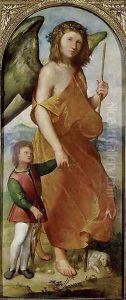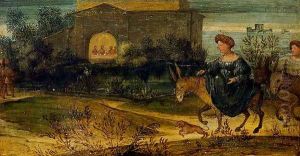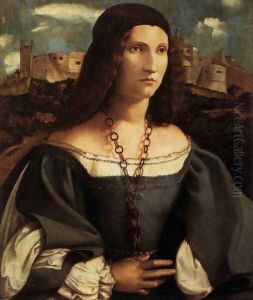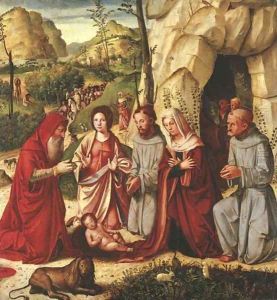Altobello Melone Paintings
Altobello Melone, an Italian painter of the Renaissance period, was born around 1490 in Cremona, a city in the Lombardy region of northern Italy. Details about his life are relatively sparse, but it is known that he was active in his native city for the majority of his career. Melone is often associated with the Cremonese school of painting, which also included artists such as Giovanni Antonio da Pordenone and Giulio Campi.
Melone's work is characterized by its vivid coloration and dramatic use of light and shadow, features that suggest the influence of Venetian painting, as well as by the expressiveness of his figures and the often emotional intensity of his scenes. His artistic output includes religious themes, portraits, and altarpieces. One of his most noted works is the 'Road to Emmaus' (circa 1516-1524), which displays his skill in rendering narrative and his keen eye for detail.
Despite his local success, Melone did not achieve the widespread fame of some of his contemporaries. Nevertheless, his work was highly regarded by those who commissioned it, and he contributed significantly to the artistic landscape of Cremona during the Renaissance. Melone's exact date of death is uncertain, but it is believed that he died around 1543. His works can be found in various museums and collections, primarily in Italy, and they continue to be studied for their contribution to the development of Renaissance art in Lombardy.




